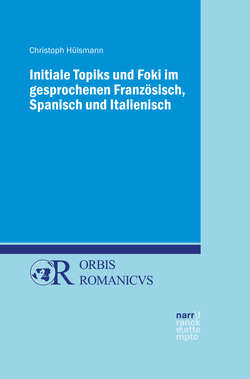Читать книгу Initiale Topiks und Foki im gesprochenen Französisch, Spanisch und Italienisch - Christoph Hülsmann - Страница 18
3.4 Exkurs: Fokus, Topik und Kontrast
ОглавлениеDie Beziehung zwischen Informationsstruktur und Kontrastivität ist, wie Molnár (2006) ausführt, insofern komplex, als der Begriff Kontrast im Unterschied zu den Konzepten Topik oder Fokus keine direkte Verbindung zur Informationsstruktur aufweist:
The notion of contrast does not obviously fit in a simple manner in the architecture of information structure, since it does not directly correspond to the basic requirements of information structuring – coherence and informativeness – as in the case in connection with the two core notions topic and focus. Contrast seems to operate in a quite different direction and works orthogonally to topicality and focussing, both overlapping and cutting across these two established notions of information structure. (Molnár 2006, 198)
Lange Zeit wurde Kontrast demnach nicht als eigene grammatische Kategorie angesehen. (cf. Molnár 2006, 213) Das trifft etwa auf die Arbeiten von Lambrecht zu: „[C]ontrastiveness, unlike focus, is not a category of grammar but the result of the general cognitive processes referred to as ‚conversational implicatures‘.“ (Lambrecht 1994, 291)
Gegen die Annahme von Kontrastivität als eigenständige Kategorie spricht die Tatsache, dass der Unterschied zwischen kontrastivem und nicht kontrastivem Fokus in vielen Sprachen nicht systematisch markiert wird. So weichen kontrastive Foki in prosodischer Hinsicht oft nur unwesentlich von Informationsfoki ab.1 (cf. Zimmermann 2008, 348) Auf morphologischer Ebene sind etwa die vielzitierten Topik- und Fokuspartikel des Japanischen wa und ga und die koreanische Partikel nun nicht nur mit kontrastiven, sondern auch mit nicht kontrastiven Lesarten kompatibel. Ein syntaktisches Argument gegen die Annahme einer eigenen Kategorie liefert die Feststellung, dass kontrastive Foki meist nicht an eine spezielle Position im Satz gebunden sind. So sind kontrastive Konstituenten in Sprachen wie dem Deutschen oder Englischen von nicht kontrastiven aufgrund der gleichen syntaktischen Oberflächenstruktur der jeweiligen Äußerungen oft nicht zu unterscheiden. (cf. Molnár 2006, 213–214) Der Beitrag von Prince (1978) hat darüber hinaus gezeigt, dass auch Spaltsätze (en. clefts
